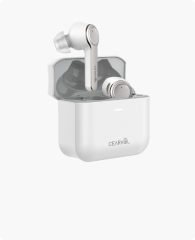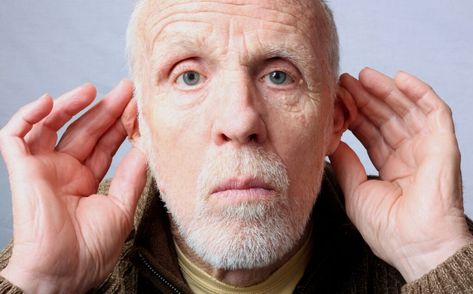Bilateral hearing loss is a condition in which individuals experience reduced hearing ability in both ears. This loss of hearing can have a profound effect on one's daily life, impacting communication, emotional well-being, and social interactions. In this article, we'll provide a comprehensive overview of bilateral hearing loss, exploring its causes, symptoms, ICD-10 classification, VA ratings for veterans, and treatment options. Whether you're just learning about this condition or are actively seeking solutions, understanding bilateral hearing loss is crucial for effective management.
🚀 Navigate This Post
- ➤ Part 1: What is Bilateral Hearing Loss?
- ➤ Part 2: Types of Bilateral Hearing Loss
- ➤ Part 3: ICD-10 Codes for Bilateral Hearing Loss
- ➤ Part 4: Recognizing the Symptoms and Impacts of Bilateral Hearing Loss
- ➤ Part 5: VA Ratings for Bilateral Hearing Loss
- ➤ Part 6: Effective Treatment Options for Bilateral Hearing Loss
- ➤ Part 7: Living with Bilateral Hearing Loss
You may also be interested in:
- Hearing Issues: Sensorineural Hearing Loss
- Hearing Issues: Conductive Hearing Loss
- Comprehensive Guide: Everything You Need to Know about Hearing Aids
Part 1: What is Bilateral Hearing Loss?
Bilateral hearing loss is defined as hearing impairment in both ears. Unlike unilateral hearing loss, which impacts just one ear, bilateral hearing loss can lead to more noticeable challenges, such as difficulty distinguishing where sounds are coming from and increased strain in group conversations or noisy environments. This type of hearing loss varies in severity, ranging from mild to profound, and it can affect individuals at any age.
Part 2: Types of Bilateral Hearing Loss

- Conductive Hearing Loss: This type involves a blockage or damage in the outer or middle ear that prevents sound from reaching the inner ear. Common causes include ear infections, blockages, or physical damage to the ear structure. Conductive hearing loss is often reversible with medical intervention.
- Sensorineural Hearing Loss (SNHL): This is the most common form of bilateral hearing loss and occurs due to damage in the inner ear or auditory nerve. Bilateral sensorineural hearing loss is typically permanent and often related to aging, exposure to loud sounds, or genetic factors.
- Mixed Hearing Loss: This type combines conductive and sensorineural hearing loss, affecting both the outer/middle ear and inner ear or auditory nerve. Mixed hearing loss requires a combination of treatments and can be more complex to manage.
Part 3: ICD-10 Codes for Bilateral Hearing Loss
The ICD-10 classification system is a global standard used for documenting and diagnosing medical conditions, including bilateral hearing loss. Proper documentation helps ensure individuals receive the appropriate care and allows for efficient insurance processing. Common ICD-10 codes for bilateral hearing loss include:
- H90.3 – Bilateral Sensorineural Hearing Loss: This code applies to cases of nerve damage or inner ear issues that cause hearing loss.
- H91.93 – Unspecified Bilateral Hearing Loss: Used when the specific type of hearing loss is undetermined, this code allows for further diagnostic flexibility.
Identifying the correct ICD-10 code for bilateral hearing loss helps both patients and providers to ensure accurate record-keeping and access to necessary treatments, such as hearing aids or therapy. If you're experiencing hearing challenges and need more information, consider discussing these codes with your provider.
Part 4: Recognizing the Symptoms and Impacts of Bilateral Hearing Loss
Common Symptoms of Bilateral Hearing Loss
Bilateral hearing loss presents several noticeable symptoms that impact daily life:
- Difficulty Understanding Speech: Conversations, especially in noisy settings, may sound muffled, making it hard to discern individual words.
- Reduced Sound Localization: Hearing in both ears allows us to determine the origin of sounds, but bilateral hearing loss affects this ability, impacting spatial awareness.
- Increased Listening Effort: Bilateral hearing loss often leads to listening fatigue, as individuals expend more energy focusing on sounds.
- Social Withdrawal and Isolation: Hearing loss can make social interactions challenging, leading some individuals to avoid gatherings and experience a sense of isolation.
Psychological and Social Impact
Living with bilateral hearing loss can take an emotional toll, leading to frustration and, in some cases, depression. As social engagement decreases, mental well-being can be affected. Modern Cearvol hearing aids provide advanced sound amplification and noise reduction technology, helping individuals reconnect with loved ones and reduce the sense of isolation.
Part 5: VA Ratings for Bilateral Hearing Loss
For veterans, VA ratings are available for bilateral hearing loss, providing disability compensation based on the severity of the condition. The U.S. Department of Veterans Affairs (VA) assesses hearing loss using audiometric tests, determining a disability rating that affects compensation and access to benefits.
Qualifying veterans receive a VA rating based on their ability to hear sounds across various frequencies. This rating is crucial as it determines the level of financial support and resources available, such as hearing aids and other assistive devices. Veterans experiencing bilateral sensorineural hearing loss can benefit from the VA's support system, improving their quality of life through comprehensive care.
Part 6: Effective Treatment Options for Bilateral Hearing Loss
Bilateral hearing loss can be managed with a range of treatments, each tailored to the specific needs and hearing levels of the individual.
1. Hearing Aids
Hearing aids are an essential and accessible option for individuals with bilateral hearing loss. These devices amplify sound, reduce background noise, and provide greater speech clarity in social settings. Cearvol hearing aids offer customizable adjustments through their app, allowing users to fine-tune settings based on personal needs and various environments. But this OTC hearing aid is only for mild to moderate hearing loss, and you'd better have a check on the degree of hearing loss before you buy them.
Benefits of Cearvol Hearing Aids for Bilateral Hearing Loss
- Directional Microphones: By capturing sounds from the front, Cearvol hearing aids help focus on conversations in noisy environments.
- Noise Reduction: Cearvol aids use sophisticated noise-reduction technology to improve clarity, especially in crowded settings.
- Long Battery Life: With up to 12 hours of continuous use and a backup battery, users can rely on Cearvol hearing aids for all-day functionality.

Diamond X1 - Best Hearing Aids with Bluetooth
Newcomer Price
$249.99 $309.99
- ✔ Adaptive sound modes for clear hearing.
- ✔ Bluetooth for calls & streaming.
- ✔ App-controlled, customizable adjustments.
- ✔ Rechargeable & fast charging.
- ✔ Ideal for mild to moderate hearing loss.
2. Cochlear Implants
For profound cases where traditional hearing aids may not suffice, cochlear implants offer an alternative by directly stimulating the auditory nerve. These implants bypass damaged ear structures, allowing individuals to experience sound. Cochlear implants are generally reserved for those with severe hearing loss and require a surgical procedure.
3. Assistive Listening Devices (ALDs)
Assistive listening devices can enhance hearing in specific environments, such as large gatherings. These devices work in tandem with hearing aids, amplifying important sounds and filtering background noise. FM systems and loop systems are two common types that provide additional support in challenging hearing environments.
4. Communication Strategies
Beyond devices, there are practical strategies to improve communication, such as maintaining eye contact, reducing background noise, and positioning oneself in well-lit areas. These techniques can make social interactions smoother and more enjoyable for individuals with bilateral hearing loss.
Part 7: Living with Bilateral Hearing Loss
Adapting to bilateral hearing loss requires patience, the right tools, and social support. Many individuals with bilateral hearing loss benefit from using advanced wireless Bluetooth hearing aids and communication techniques that enhance sound clarity and restore confidence in social settings.

In addition, visual aids like alert systems can support daily activities without relying solely on sound. These lifestyle adjustments help individuals stay connected and engaged, improving quality of life and mental well-being.
Conclusion
Bilateral hearing loss is a complex condition with far-reaching impacts on communication and mental health. However, by understanding the causes, symptoms, ICD-10 codes for bilateral hearing loss, and VA ratings, individuals can seek out suitable treatments.
Whether you're dealing with bilateral sensorineural hearing loss or looking for reliable ICD-10 coding information, a thorough understanding of your options is essential. If you or a loved one are experiencing symptoms of bilateral hearing loss, speak with a healthcare provider about diagnosis and treatment options. Cearvol hearing aids offer advanced technology designed to enhance sound clarity and improve daily life, making it easier to navigate social settings with confidence and ease.
For more information on hearing loss conditions, check out our guide to unilateral hearing loss. Each condition requires different approaches, and finding the right solution can help you maintain a fulfilling, connected life.








Leave a comment
All comments are moderated before being published.
This site is protected by hCaptcha and the hCaptcha Privacy Policy and Terms of Service apply.